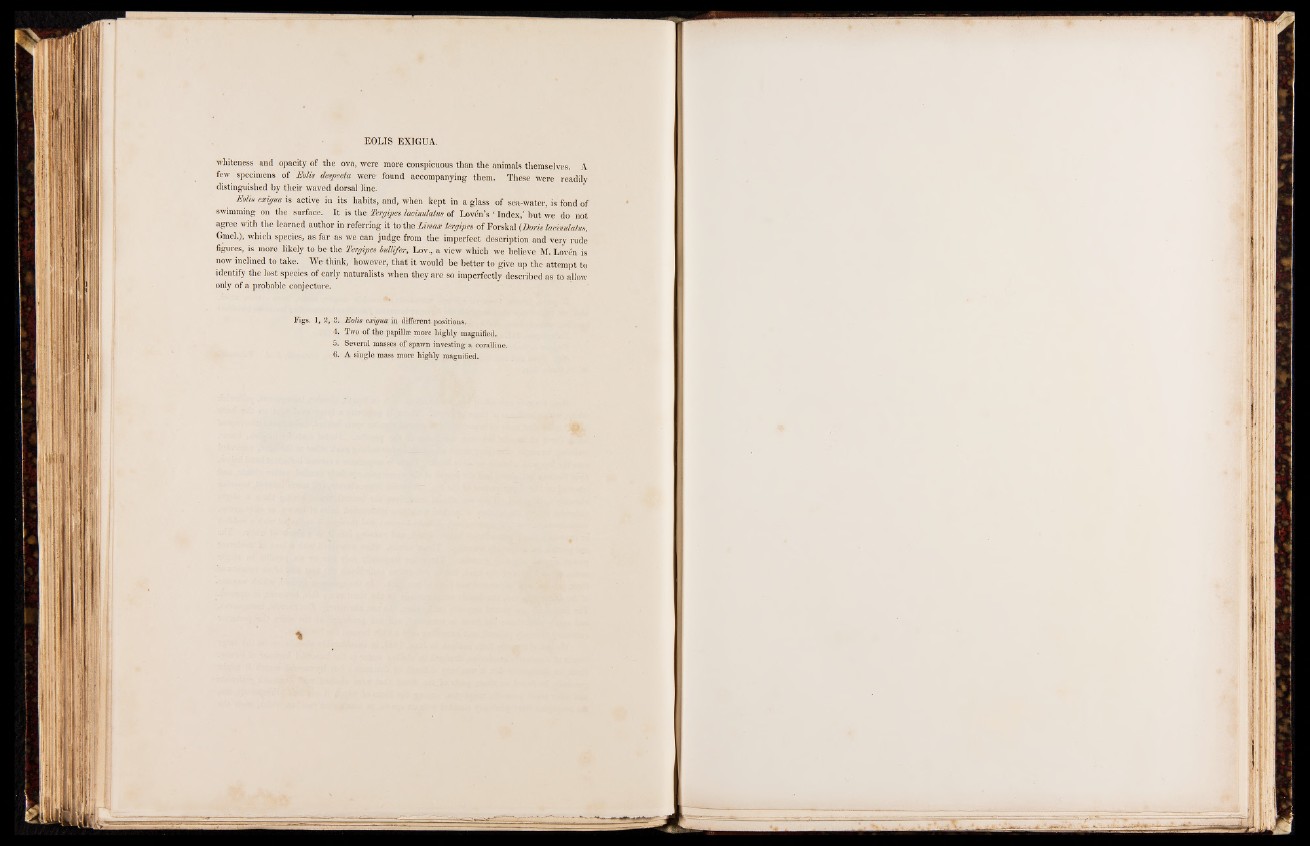
whiteness and opacity of the ova, were more conspicuous than the animals themselves. A
few specimens of Solis despecta were found accompanying them. These were re ad ill
distinguished by their waved dorsal line.
Solis exigua is active in its habits, and, when kept in a glass of sea-water, is fond of
swimming on the surface. It is the Tergipes lacinulatus of Loven’s • Index,’ but we do not
agree with the learned author in referring it to the Umax tergipes of Forskal (Doris lacinulatus,
Grnel.J, which species, as far as we can judge from the imperfect description and very rude
figures, is more likely to be the Tergipes bullifer, Lov., a view which we believe M. Loven is
now inclined to take. We think, however, that it would be better to give up the attempt to
identify the lost species of early naturalists when they are so imperfectly described as to allow
only of a probable conjecture.
Figs. 1, 2, 3. Eolis exigua in different positions.
4. Two of the papillae more highly magnified.
5. Several masses of spawn investing a coralline.
6. A single mass more highly magnified.